It hasn’t been a good week for gardening; the weather was against us. We had torrential rain on Friday morning; enough to fill the dykes, birdbaths and even leaving the ground squelchy in places. Because of this, I have leaned my Six on Saturday in a slightly different direction, out of the garden but staying with flowers; flower that I still like but am thankful that I have them less and less in the garden nowadays – some are still with me, a concession to wildlife gardening, a nod towards supporting our pollinators or simply through their own persistence.
Over the past number of years, summer into autumn has been the time to meet with a small group of friends and go to visit sites where our native orchids grow. They are beautiful and fascinating plants and I never tire of admiring them nor of being with those who share this enthusiasm. However, this Coronavirus, Covid 19, has completely halted these outings for me and I haven’t been out at all to meet with these friends. There have been a few nervous local outings to catch some not-to-be-missed flowerings – an exceptional flowering of Bee Orchids in Tramore, a previously unrecorded form of the Bee Orchid which popped up on the grounds of a local college when they stopped mowing the grass and allowed the wildflowers to appear and a couple of visits to local populations of the Pyramidal Orchid and Early Marsh Orchids. However, what had become routine annual outings were not possible this year.
As a pastime, and to do something along the lines of visiting orchid sites, I began taking note of the wildflowers which are growing in my immediate area. We live on a country road with the usual full verges and are surrounded by farmland. Across the road from the house, there is an area of river meadow which our neighbour used for summer grazing but he no longer keeps cows so it has been left idle for some years, too wet for arable crops. The field headlands, road verges, river meadows and riverbank give me an unusually wide range of plant environments very close to home, none more than a five minute walk for me and my plant count since late June now approaches 150 species – I include some from occasional walks.
For my Six on Saturday this week I have selected six of the most common wildflowers:
This first is Common Ragwort, Senecio jacobaea. I’m sure many of you will baulk at this choice for it is a plant which has been despised forever and ever it seems. In Ireland, it is listed as a noxious weed and landowners are obliged by law to clear it from their land. People of my age will recall the annual torture of clearing hay meadows of “Buachalán” before the hay was saved. It had to be pulled, root and all, and was then burned for it could not be allowed into the saved hay as it was poisonous to animals. Nowadays, its value as a plant which is of benefit to pollinators is recognised, particularly it importance as a host plant for burnet moths. The last photograph is the series below is a form where the flowers have no petals – called Rayless Ragwort – and is found on sand dunes in the southeast of Ireland.


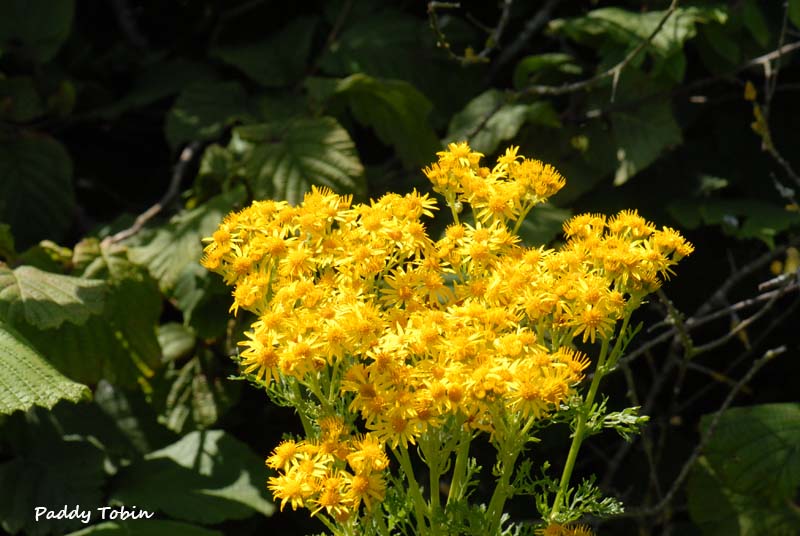
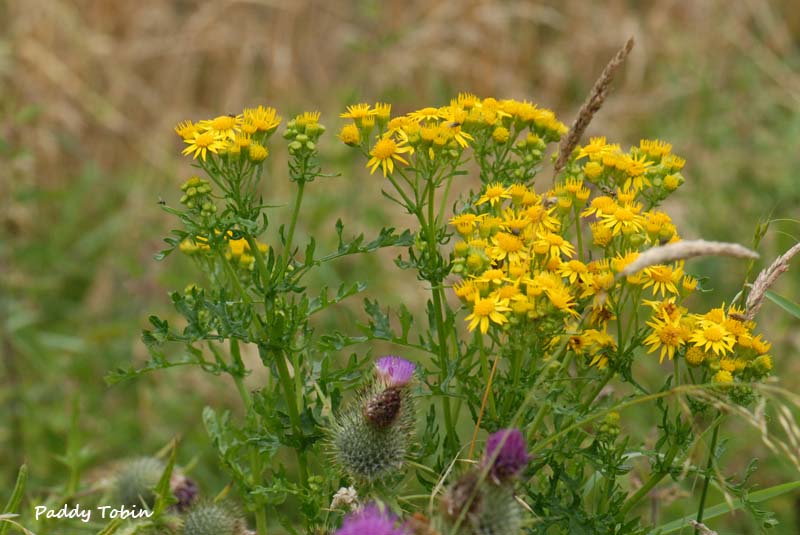


Rayless Ragwort
The fragrance of Meadowsweet, Filipendula ulmaria, as you walk a bóithrín (a country road) is quite intoxicating and more than a match for the finest rose. As with Elderflower, you can make a delicious cordial from the flowers of Meadowsweet and, with its anti-inflammatory properties will keep your tummy feeling well. It also has a high content of salicylic acid (main ingredient of aspirin) so you are guaranteed not to have a hangover if you decide instead to make a Meadowsweet wine – my aunt used make such a brew – Yeugh!
The mention of willowherb will raise the hackles of most gardeners for it can be one of the greatest pest weeds of the garden. However, Rosebay Willowherb, Chamerion angustifolium (formerly Epilobium angustifulium) is generally not the willowherb which is a garden nuisance – there are others for the purpose – and I have even seen a white form used in herbaceous borders on occasion. In North America, it is known as “Fireweed”, not for its colour but for the fact it is so very quick to recolonise ground following forest fires. Despite its poor reputation it is a very beautiful plant.
Wild Carrot, Daucus carota, is the wild ancestor of our garden carrots – if you don’t believe me, then pull a plant from the ground, smell the root and you will immediately recognise the distinctive smell of carrot. In comparison with modern-day carrots, the root is very small while the above-ground growth is far bigger. The umbrella-shaped flowerhead regularly has a reddish flower in the centre which acts as an attractant to pollinating insects and you will rarely see the flower without an insect on board. The fading flower regularly turn a beautiful red colour.
Yarrow, Achillea millefolium, is one of the most attractive of our native wildflowers particularly when one finds a good pink-flowering form. It seems that it was named for the Greek god, Achilles, who used it extensively to heal his wounds following battle. The “millefolium” of the name describe the very finely-cut foliage – a thousand leaves, it would appear!
And, finally, and just for a little bit of teasing, I have chosen Creeping Thistle, Circium arvense, probably one of the most annoying of agricultural weeds, an aggressive coloniser which has developed some resistance to weedkillers. There are big patches along the headlands of the field behind our house. Despite its bad reputation it is a pretty thing and the occasional white-flowered form is attractive as is the whole plant when gone to seed.




A white-flowered form. 
Gone to seed! 
If you would like to see other “Six on Saturday” blogs, visit: https://thepropagatorblog.wordpress.com/ Read his Six on Saturday entry and then scroll down to the replies and you will find other bloggers have posted links to their posts there.













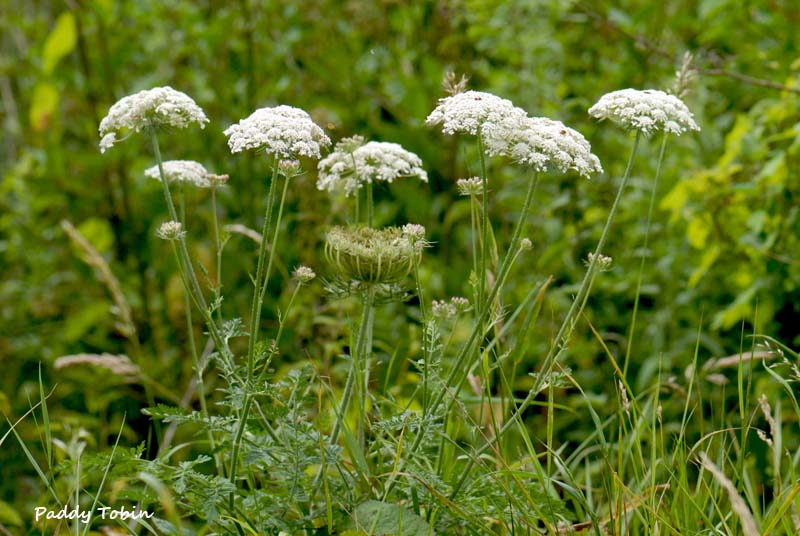






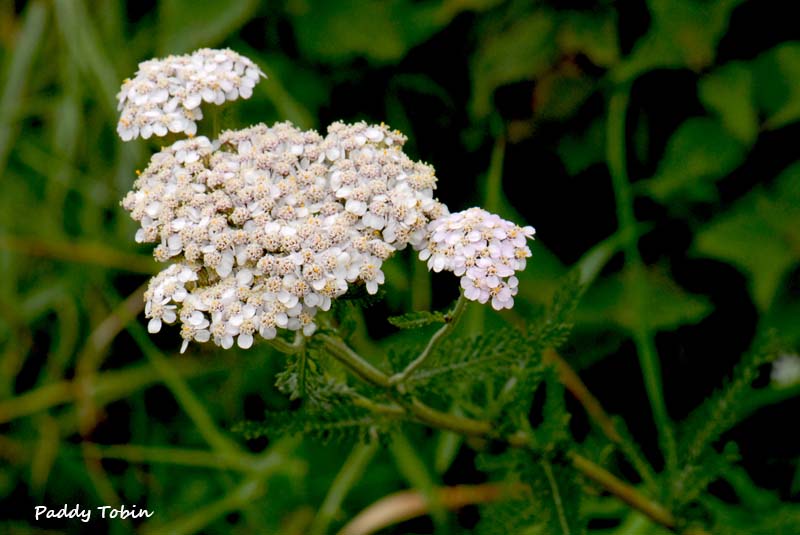
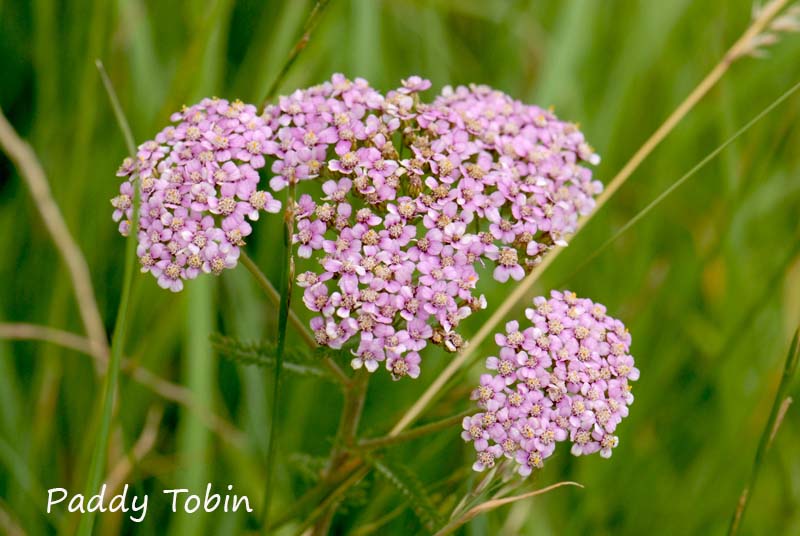
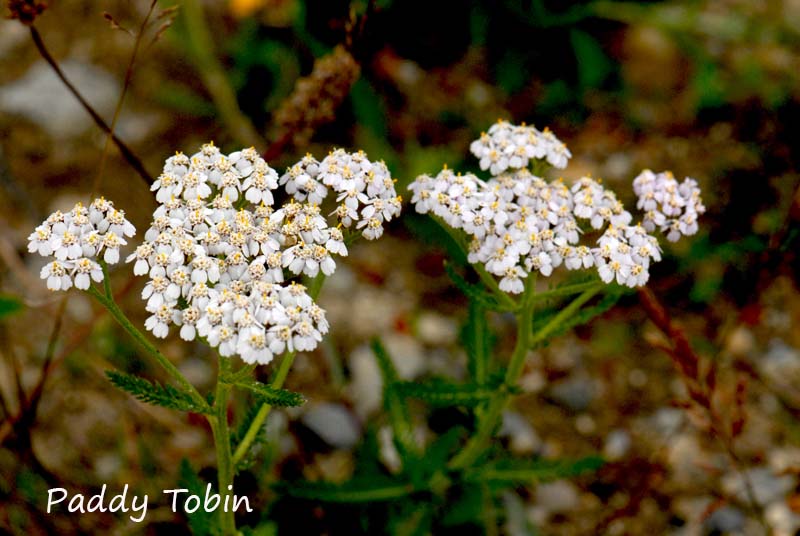

We had weather like that on Thursday, it was relentless all day. Yesterday was warm, and the garden got some much-needed attention, but the plants took yet another beating.
You seem to have a lovely area right on your doorstep to walk in, though it’s hard having to go on your own instead of outings with friends (my outings with friends were usually to garden centres for lunch and shopping!) .
I recognise all the wildflowers in your post, but couldn’t have put a name to any of them, or any of the detail you’ve provided. Thanks for a lovely, informative post.
LikeLiked by 1 person
We live very close to town but still in the country; a good arrangement.
LikeLike
I feel like I’ve visited the prairies and pastures this morning! Thank you, Paddy, for capturing the freedom of rural living. We also live in a rural spot, and I am all too familiar with that willowherb, or its relative.
LikeLiked by 1 person
Great selection of wildflowers this week Paddy! Not sure I find the thistles gone to seed particularly attractive!
LikeLiked by 1 person
I don’t think the seed is a particularly big threat. With this species, the spread is at the root and it can be a curse to get rid of it.
LikeLike
I thoroughly enjoyed reading your Six on Saturday post this week! It is very informative indeed, and the photos are lovely. The willowherb is particularly lovely, as is the reddish flower of the wild carrot.
LikeLiked by 1 person